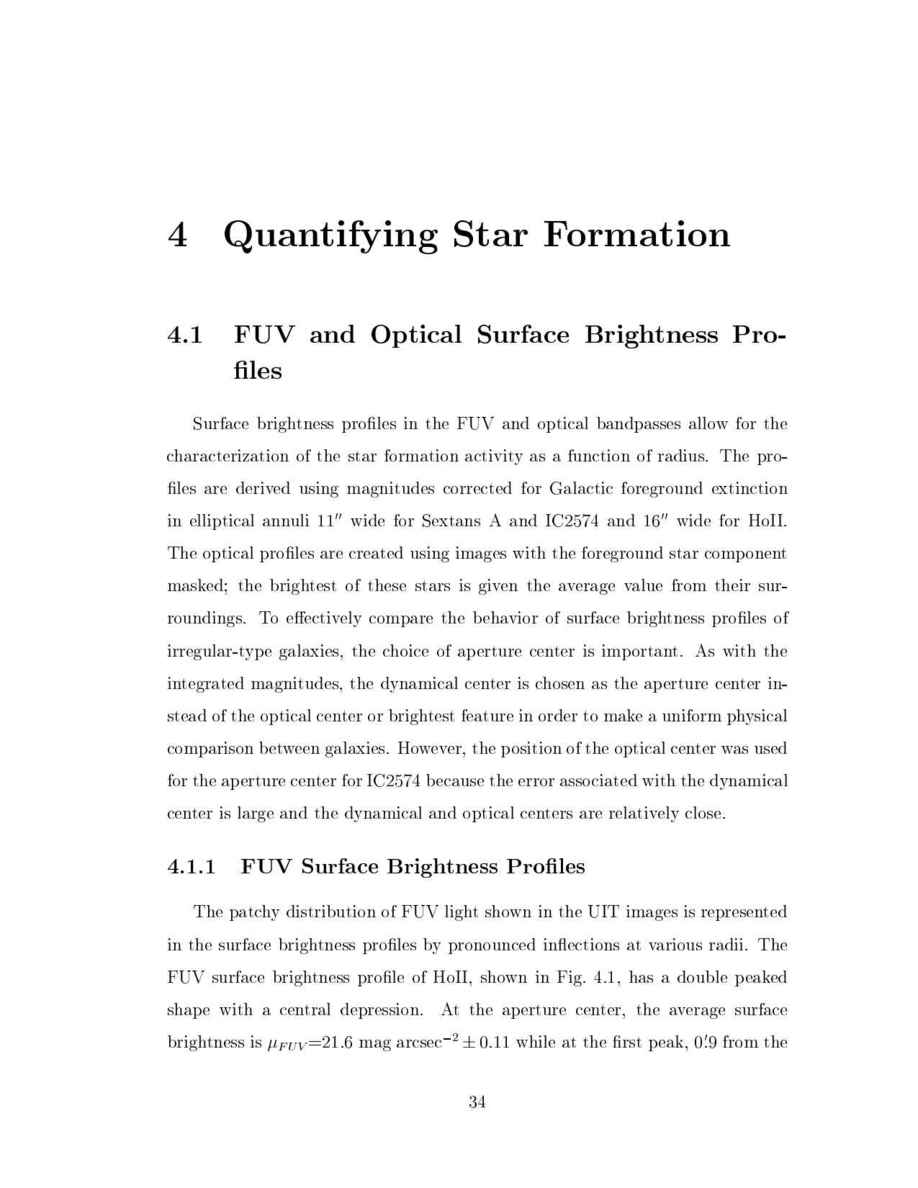Astronomical Applications Department, U.S. Naval Observatory thesis Page 48

4 Quantifying Star Formation
4.1 FUV and Optical Surface Brightness Pro-
les
Surface brightness pro les in the FUV and optical bandpasses allow for the
characterization of the star formation activity as a function of radius. The pro-
les are derived using magnitudes corrected for Galactic foreground extinction
in elliptical annuli 11
00
wide for Sextans A and IC2574 and 16
00
wide for HoII.
The optical pro les are created using images with the foreground star component
masked; the brightest of these stars is given the average value from their sur-
roundings. To e ectively compare the behavior of surface brightness pro les of
irregular-type galaxies, the choice of aperture center is important. As with the
integrated magnitudes, the dynamical center is chosen as the aperture center in-
stead of the optical center or brightest feature in order to make a uniform physical
comparison between galaxies. However, the position of the optical center was used
for the aperture center for IC2574 because the error associated with the dynamical
center is large and the dynamical and optical centers are relatively close.
4.1.1 FUV Surface Brightness Pro les
The patchy distribution of FUV light shown in the UIT images is represented
in the surface brightness pro les by pronounced in ections at various radii. The
FUV surface brightness pro le of HoII, shown in Fig. 4.1, has a double peaked
shape with a central depression. At the aperture center, the average surface
brightness is
F
U
V
=21.6 mag arcsec
,2
0
:
11 while at the rst peak, 0
:
0
9 from the
34
